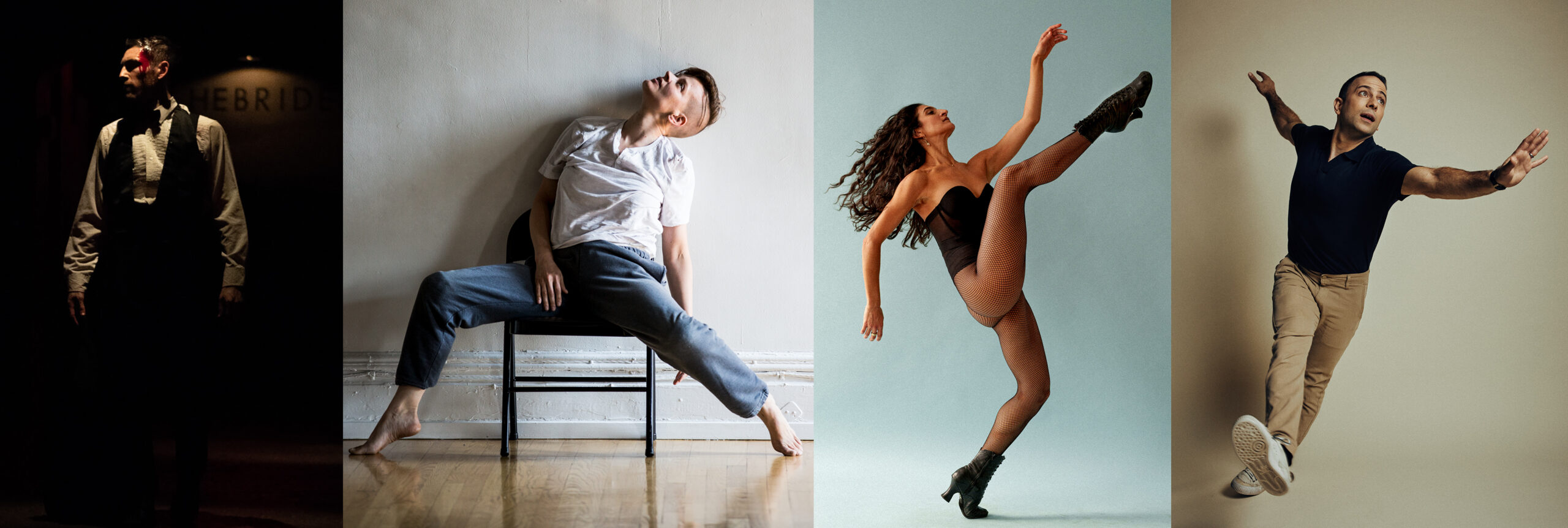The award-winning immersive-theater experience Sleep No More, which has haunted Manhattan’s McKittrick Hotel since 2011, will welcome its last guests in January 2025, after initially scheduling its closure for January 2024 and repeatedly extending performance dates. Created by British theater company Punchdrunk and produced by Emursive, the show uses dance and minimal dialogue to shape its interwoven narratives, primarily the story of Macbeth, in a film-noir setting.
Sleep No More, which features dreamlike choreography by Maxine Doyle, has also been a home for dozens of contemporary dancers. For New York City–based dancer and choreographer Ida Saki, the show offered a chance to do more than “dance for dance’s sake.”
“Dancers are storytellers,” says Saki, who performed in the show from 2015–18 and helped remount it in 2022 after it had temporarily closed due to the pandemic. “We learned the story through the dance, but we couldn’t do the dancing without the storytelling.”
“I’m drawn to narrative and intention first,” says Marc Cardarelli, who was a Sleep No More swing from 2015–20 and 2022–23, and is Saki’s husband. (The two met while performing in the production.) “I saw the show and felt, ‘This is where I need to be.’ ”
Unlike traditional proscenium-theater performances, Sleep No More allows the audience to wander through multiple floors of simultaneous scenes, sometimes coming in direct contact with the performers. “I think once you do Sleep No More, you kind of catch this immersive-theater bug,” says current Sleep No More rehearsal director Brandon Coleman. “You don’t want that fourth wall anymore. You want to be as close with the audience as possible. You want to help people feel something through art again.”
Removing the distance between performer and audience is not without its risks. Over the years of its run, there have been instances when the cast and crew of Sleep No More have raised concerns over safety. In response, Sleep No More brought on intimacy coordinators in 2019.
Over the years, Sleep No More became an aspirational job for many contemporary dancers from various backgrounds. Kelly Bartnik originated a role in the show’s 2009 Boston run and expanded her repertoire when it transferred to New York City.
“It changes you as a performer,” Bartnik says. “It changes you as a creator. It changes the quality of energetic exchange between performer and audience member.”
The Sleep No More cast rotates roles during the show’s eight-weekly performances, and the venue makes it impossible for a viewer to see every scene in one night. That means the performers are partly responsible for preserving the show’s integrity—an opportunity and a challenge.
“A rehearsal director in a company is able to watch everything, whereas in Sleep No More there’s so much going on at all times that the power is really in the performer to maintain the details and the structure and do justice to the show,” Saki says. “I can’t think of another place like that.”
What’s next for Sleep No More’s cast members and alums? Several already make their own immersive choreography. Both Cardarelli and Bartnik recently collaborated with fellow Sleep No More veteran Billy Bell on projects under his multidisciplinary artistic firm, Cinereal Productions. As part of the all-female theater company Artemis is Burning, Bartnik is now working on a new immersive show based on the story of Rasputin, aiming to open in 2025.
“There’s a wealth of performers who have walked through those halls that are creating now, and are taking that type of theater and elevating it,” Cardarelli says. “So much has changed in technology and what dancers can actually do [since the show first opened]. Sometimes things need to go away to make space for other things to come in.”

